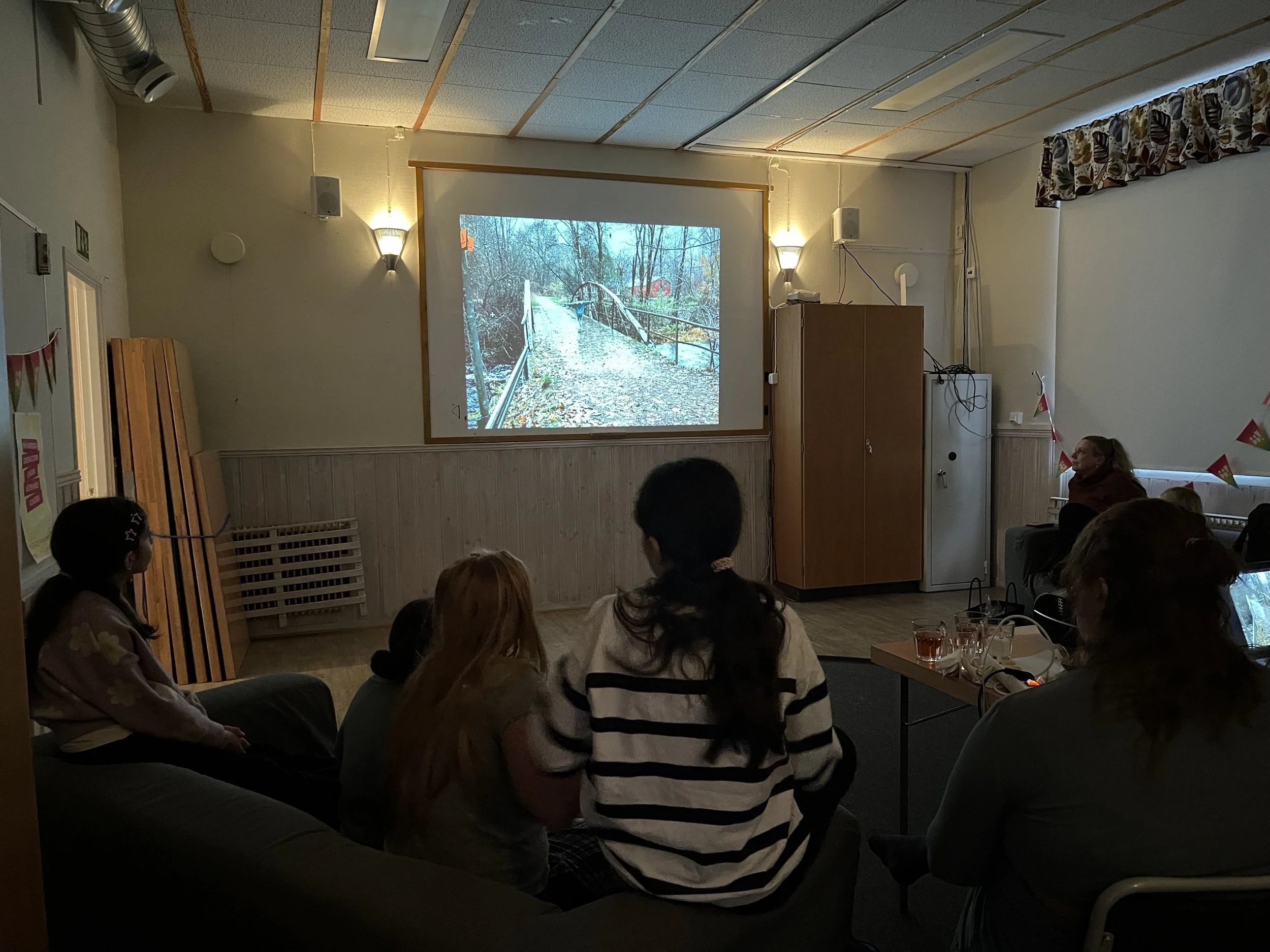What Does It Mean to Belong to a Place?
Bästa Biennalen Workshop carried out during the autumn holiday week of 2025 in collaboration with Felicia Campbell and Charlott (Lotta) Olofsson at Fritidsgården Blankan in Knäred, Laholm Municipality. Artistic leaders: Anna Bokström and Nina Bacos
The photo workshop “What Does It Mean to Belong to a Place?” uses photography to explore what it means to live in a place, to feel a sense of belonging, and to express one’s own relationship with one’s surroundings — in short, to own one’s place.
Implementation This workshop begins with a a two-part slideshow but is adapted depending on the location where it is.. In this case the first part touched on Knäred’s history as the site of a battle in the Swedish-Danish war of the 1600s. We used this as a starting point to talk about how ordinary people were caught in the middle of kings’ quarrels, whether Knäred was Swedish or Danish, about the snapphanar (guerrilla fighters) and outlaws, and what the people of Knäred at that time might have thought about others deciding the nationality of their home region. After this, we showed a wide range of photographic approaches to depicting one’s surroundings and the meaning of belonging. The slideshow included both documentary works and staged, conceptual photography of various kinds. When the slideshow was finished, the children were asked to go out for about 40 minutes and take at least 10 photos each (in groups or individually). The instruction was to photograph freely. As they returned, we downloaded their images and discussed with each individual or group which pictures they wanted to keep. When this was done, we compiled all the photos into a slideshow and showed each individual series one after another. After that, we mixed the individual series together and edited the material into a whole. During this process, we discussed which images were important, in what order they should appear, and why they evoked certain feelings. Once the image sequence was set, we found there was time to create an audio track in which the children could say something about the photos they had made. At this point, the creative process took on a life of its own — unprompted, the children began adding sound effects, and alongside the description of nature and the local area, a murder story also emerged. One could say that the focus shifted toward storytelling through multiple means rather than simply presenting a slideshow about identity and belonging.
In Addition Beyond the photography and editing, we also shared a cooked lunch (spaghetti with vegetarian/halal and meat-based Bolognese), had breaks, practiced relaxation /meditation, and danced when we needed to disperse or concentrate energy.
Reflection Overall, the workshop generated a meaningful artistic experience that combined visual thinking, conversation, and community. The program was developed from content that Nina had previously carried out several times on her own (but always over a longer period, such as one or two weeks). However, being two facilitators increased flexibility and made it possible to deviate from the plan — for example, adding sound was completely unplanned. The creative process gives tools to the participant to view their local environment with a sense of agency, and on this occasion, it also gave us a new way to develop the content of the workshop. We are grateful for having had this opportunity and will bring better sound recording equipment next time.
